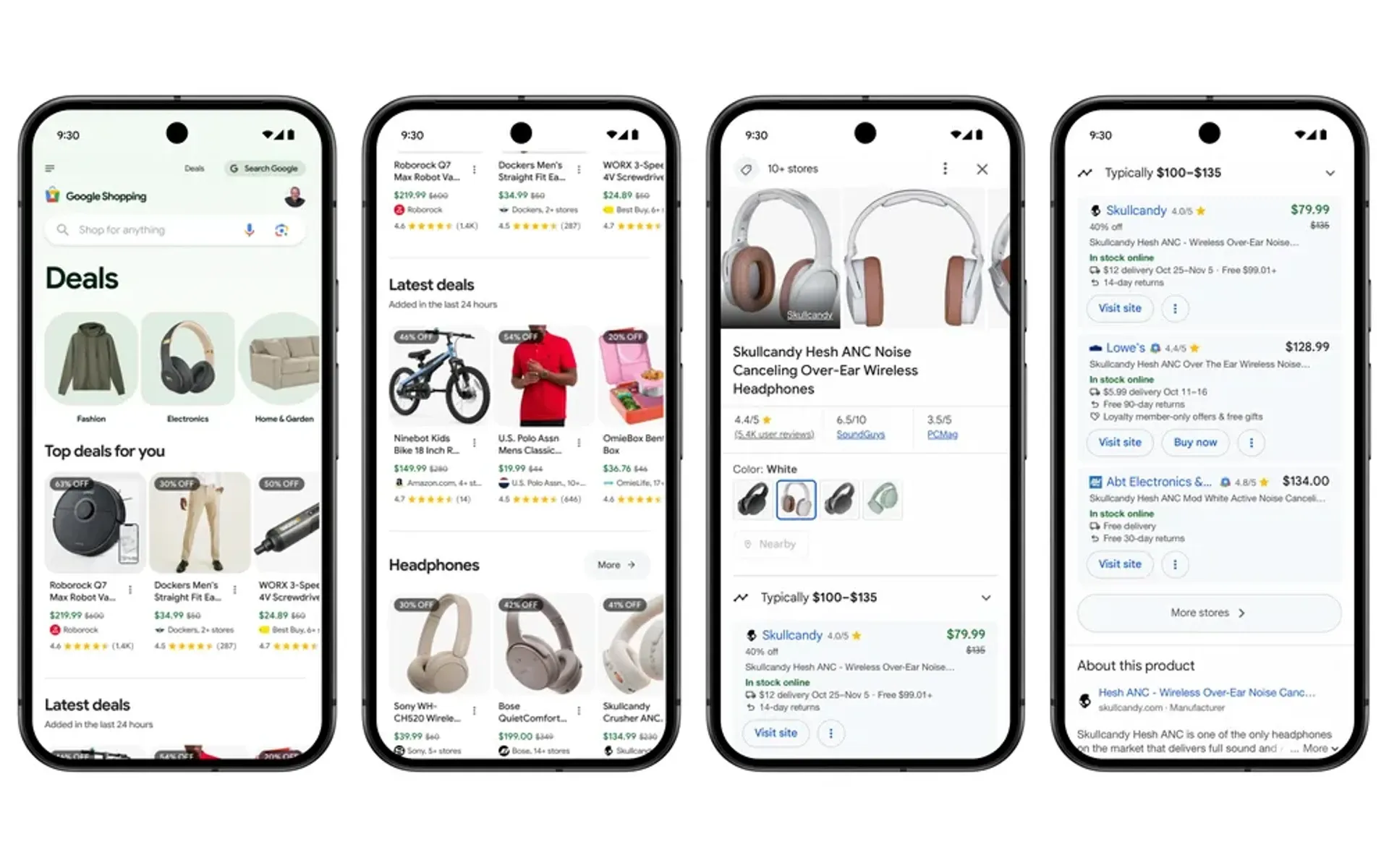Google Shopping's AI makeover promises personalized, efficient experience
Google unveils an AI-powered overhaul of its Shopping platform, aiming to revolutionize how users discover and purchase products online.

On October 15, 2024, Google announced a significant transformation of its Shopping platform, leveraging advanced artificial intelligence to enhance the online shopping experience. This overhaul, which began rolling out in the United States on the day of the announcement, represents a major shift in how consumers interact with e-commerce through Google's ecosystem.
AI at the core of Google Shopping's redesign
The reimagined Google Shopping experience is built from the ground up with AI integration, specifically utilizing Gemini models in conjunction with the platform's vast Shopping Graph, which contains over 45 billion product listings. This integration aims to provide users with more relevant and personalized shopping results.
According to Sean Scott, VP/GM of Consumer Shopping at Google, the new system is designed to address the needs of the billion-plus daily shopping interactions across Google's services. The AI-driven approach is set to streamline product discovery, research, and purchasing processes.
Google Shopping
Key Features of the new Google Shopping experience
New Google Shopping experience
AI-Generated Product Briefs
One of the standout features of the revamped platform is the introduction of AI-generated briefs. When users search for products, they will receive a concise summary of key considerations related to their query. For instance, a search for "Men's winter jacket for Seattle" will yield an AI-compiled brief outlining essential factors to consider for that specific climate and use case.
Dynamic Filters and Personalized Recommendations
The new interface incorporates dynamic filters that allow users to refine their search results based on personal preferences, such as size requirements or local availability. Additionally, the platform now offers a personalized feed on the Google Shopping home page, showcasing products and videos tailored to individual user interests.
Enhanced Price Comparison Tools
Recognizing the importance of value to consumers, Google has integrated advanced deal-finding tools throughout the shopping experience. These include:
- Price comparison features
- Price insights
- Price tracking capabilities
- A dedicated deals page offering personalized discounts
Virtual Try-On and AR Shopping Tools
Building on existing features, the updated Google Shopping continues to offer virtual try-on options for certain products, powered by generative AI and augmented reality technologies. This feature aims to increase shopper confidence by providing a more immersive product preview experience.
Implementation and user control
The new Google Shopping experience is being gradually introduced in the United States, with the rollout beginning on October 15, 2024. Users can access the updated platform via the "Shopping Tab" on Google Search or by visiting shopping.google.com directly.
It's worth noting that Google has labeled some features, particularly the AI-generated briefs, as "experimental." This designation indicates that the technology is still being refined, and Google encourages users to provide feedback to help improve the system's accuracy and relevance.
Privacy and personalization controls
Google emphasizes user control over their shopping experience. Shoppers can manage their preferences and personalized results by accessing the "Shopping preferences" option in the Google Shopping menu. Additionally, users have the ability to view and manage their activity through their Google Account's "My Activity" section.
Implications for retailers and advertisers
The transformation of Google Shopping also has significant implications for sellers and advertisers. The platform continues to allow brands to connect directly with shoppers through various means, including AI shopping experiences and rich product listing ads. This integration aims to create a more seamless connection between consumers and sellers within the Google ecosystem.
Industry context and future outlook
Google's move to overhaul its Shopping platform with AI technology comes at a time when e-commerce continues to grow and evolve rapidly. By leveraging its strengths in search and AI, Google is positioning itself to compete more effectively in the online shopping space, potentially challenging established e-commerce giants.
As the platform develops, it will be crucial to monitor how users adapt to the new AI-driven features and whether this transformation leads to increased engagement and sales through Google Shopping.
Key Facts
- Announcement Date: October 15, 2024
- Initial Rollout: United States
- Number of Product Listings: Over 45 billion in Google's Shopping Graph
- Daily Shopping Interactions: More than 1 billion across Google services
- Key Technologies: Gemini AI models, AR shopping tools, generative AI

